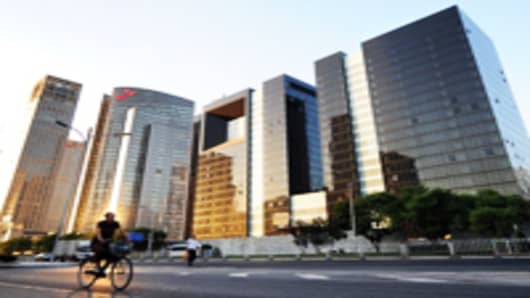We have been there before. In early 2009, Premier Wen Jiabao said in Davos that China could achieve 8.5% growth by the year-end. While the audience applauded, few had any faith in the forecast.
Like most foreign analysts, the participants presumed that China's growth would plunge along with that of the West.
Since early 2012, China has been amidst soft landing. But again, due to the accelerating turmoil in the Eurozone and the stagnation in the United States, the behind-the-façade consensus abroad has been that China is in or on way to hard landing.
And yet, since early summer, the economic fundamentals have told a very different story.
Exceeding growth target
According to new data, the third quarter indicates continued growth acceleration. In September, this was also reflected by fixed asset investment, industrial output and retail sales.
In the third quarter, GDP growth slowed in year-to-terms to 7.4%, which is in line with consensus expectations. In quarter-to-quarter terms, however, the growth intensified, representing 9.1% in annualized terms – exceeding the 7.5% growth target.
China's economy has been in soft landing since the 1st quarter. Despite strong, even disruptive headwinds in the advanced economies, the overall economic development has been relatively stable.
(Read More: China Economy Hits Bottom, Is It Time to Buy Stocks ?)
Of course, the skeptics argue that, even if China meets its 7.5% growth target for 2012, this would mark its weakest growth in 13 years.
However, taking into consideration the fact that this growth occurs amidst the most severe global crisis since the Great Depression, a renewed Eurozone recession, U.S. stagnation and a potential for a 'perfect storm' in the West, Cinese growth should be seen as an achievement.
Fall recovery
Over time, we are likely to find out that the turnaround began in early spring. Since, however, the economic data was softer than anticipated in April, the easing policies have been accelerated.
Instead of a large fiscal stimulus package, China engaged in what I have called stimulus lite – that is, a broad array of different fiscal, monetary, substantial infrastructure projects, and other policies.
The common denominator of these measures is the effort to stabilize foundations for growth.
The upcoming 18th Party Congress, which will begin only two days after the U.S. presidential elections in November, does contribute to expectations. Until the 1990s, these events were habitually followed by periods of strong investment, growth and inflation. But today China is driven more by bottom-up market forces than top-down government policies as business cycles have gradually substituted for political cycles.
(Read more: China Third Quarter GDP Growth 7.4% on Year, Below Official Target .)
Nonetheless, in a positive scenario, the upcoming Congress will strengthen confidence in the Chinese economy and thus global growth, in which China is today a critical driver. Domestically, it could also support efforts to ensure structural transition, which is an important task in the medium-term.
Growth, transition, and regional differentiation
The past slowdown has been challenging at times, but also a blessing in disguise. Over time, it will support more stable growth, structural transition, as well as economic development in China's inland and west.
(Read more: Chinese Give Luxury Goods a Pass, Go on Holiday Instead .)
An overheating economy, amidst multiple global crises, would be far more challenging than a stable slowdown, which responds flexibly to global signals, and yet continues to manifest solid growth prospects. In the medium-term, challenges will increase, however. Stabilizing growth is predicated on the containment of the local government debt burden, which is still ahead in 2013.


